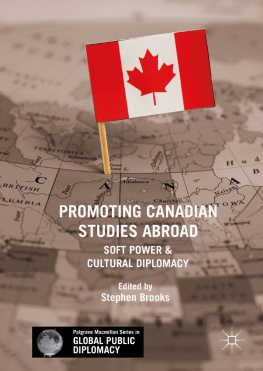THE FUR TRADE IN CANADA
by Harold A. Innis, with a new introduction by Arthur J. Ray
At the time of its publication in 1930, The Fur Trade in Canada challenged and inspired scholars, historians, and economists. Now, almost seventy years later, Harold Inniss fundamental reinterpretation of Canadian history continues to exert a magnetic influence.
Innis has long been regarded as one of Canadas foremost historians, and in The Fur Trade in Canada he presents several histories in one: social history through the clash between colonial and aboriginal cultures; economic history in the development of the West as a result of Eastern colonial and European needs; and transportation history in the case of the displacement of the canoe by the York boat. Political history appears in Inniss examination of the nature of French-British rivalry and the American Revolution; and business history is represented in his detailed account of the Hudsons Bay and Northwest Companies and the industry that played so vital a role in the expansion of Canada.
In his introduction to this new edition, Arthur J. Ray argues that The Fur Trade in Canada is the most definitive economic history and geography of the country ever produced. Inniss revolutionary conclusionthat Canada was created because of its geography, not in spite of itis a captivating idea but also an enigmatic proposition in light of the powerful decentralizing forces that threaten the nation today. Ray presents the history of the book and concludes that Inniss great book remains essential reading for the study of Canada.
ARTHUR J. RAY is a professor in the Department of History at the University of British Columbia.
HAROLD A. INNIS
The Fur Trade in Canada: An Introduction to Canadian Economic History
With a new introductory essay
by Arthur J. Ray

www.utppublishing.com
Copyright 1930 by Yale University Press
Revised edition 1956 University of Toronto Press
Abridged edition 1962, reprinted four times
A reprinting of the 1956 revised edition with a revised foreword from the 1962 edition
University of Toronto Press 1970, reprinted four times
This edition is a reprinting of the 1970 edition, with a new introductory essay
University of Toronto Press Incorporated 1999
Reprinted 2001
Toronto Buffalo London
Printed in Canada
ISBN 0-8020-8196-7 (paper)

Printed on acid-free paper
Canadian Cataloguing in Publication Data
Innis, Harold A., 18941952
The fur trade in Canada : an introduction to Canadian economic history
Includes bibliographical references and index.
ISBN 08020-81967
1. Fur trade Canada History. 2. Canada Economic conditions. 3. Northwest, Canadian History. 4. Canada History. I. Title.
FC3206.I54 1999 971 C98-932676-4
F1060.I54 1999
University of Toronto Press acknowledges the financial assistance to its publishing program of the Canada Council for the Arts and the Ontario Arts Council.
Introduction
T HE FUR TRADE IN CANADA is arguably the most definitive economic history and geography of the country ever produced. Harold Innis prepared the book in the 1920s, the heyday of scholarly searches for grand theories to explain the changing human condition, construct national mythologies, and justify the global hegemony of the West. The popular grand theories involved cultural-evolutionary models Innis drew these into the fabric of his grand narrative, the revolutionary conclusion of which is that Canada was created because of its geography, not in spite of it. This, to me, remains the most captivating idea of the work; it also is its most enigmatic proposition, in light of the powerful decentralizing forces that threaten the nation today. That said, the question must be asked, what relevance does the work have at the turn of the millennium, when North American scholarship increasingly emphasizes the deconstruction of metahistories of the very type created by Innis?
As a young political economist at the University of Toronto, Innis was intrigued by the interplay of economic forces, technology, and geography in the production of semi-processed export-oriented raw materialsknown as staples. He sought to determine the ways staple production had shaped the political map of a small, open economy like Canadas and had moulded the countrys core institutions and development.in his foreword (dated 1969) to a reprinting of the revised edition of this book (1970).
It was logical for Innis to launch his exploration of the historical economic and geographic underpinnings of the country with a study of the fur trade, even though cod, not fur, was Canadas first staple export, and the pursuit of it was the impetus that launched the fur trade. The fur industry, however, was the first European business venture to span the continent and draw the diverse regions into a single economic network, which, in turn, was linked to the expanding world economic system centred in Western Europethus the attraction for Innis.
In the course of explaining how and why fur traders forged a transcontinental business, Innis revealed the problems these entrepreneurs faced in overcoming the distances between European markets and the sources of trade goods. His research laid bare the fundamental constraints that precluded a land-based fur trade until the late 1500s, when European fur markets became more integrated and the new demand for North American furs freed the nascent industry from its cod-fishery nursery. It was a fashion rage in Europe that brought about this turn of events. Felt hats had come into vogue there, and the subsequent rise of the hat-making industry created an increasing demand for the beaver pelts that furnished the raw material for high-quality felt.
Innis argued that the resulting scramble for the beaver and other furs that aboriginal traders and hunters supplied set in motion a circular and cumulative process that propelled the industry across Canada and drew a succession of Native economies into the European economic orbit. The prime beaver country of North America encompassed the subarctic boreal forest extending across much of Canada from the Labrador coast to the Alaskan border. The eastern two-thirds of the region was the land of the lake-dotted Laurentian Shield; the western third mostly comprised the low-lying Mackenzie River basin. Prior to the industrial age, access to this region was by water. Innis realized the implications of this: much of the history of the countrys early fur trade could be understood as a struggle between groups of merchants who entered beaver country via one of the two main natural corridorseither the St. Lawrence River or Hudson Bay-James Bay.
Expansion occurred first along the St. Lawrence River route, where fur-trading institutions and practices were initially developed by the French and their aboriginal partners. The English adopted and modified the existing traditions and practices beginning the late 1660s in the process of developing the London-based Hudsons Bay Company, which exploited the Hudson Bay gateway. About a century later, the struggle for supremacy by the St. Lawrence River-based merchants, organized as the North West Company, against their Hudsons Bay Company opponents, had carried the fur trade northwest into the Mackenzie River basin, and west over the continental divide to the Pacific Coast. The fur trade had also tapped the northern parklands and grasslands of the western plains for the food this transcontinental trading network needed for sustenance.
Next page








